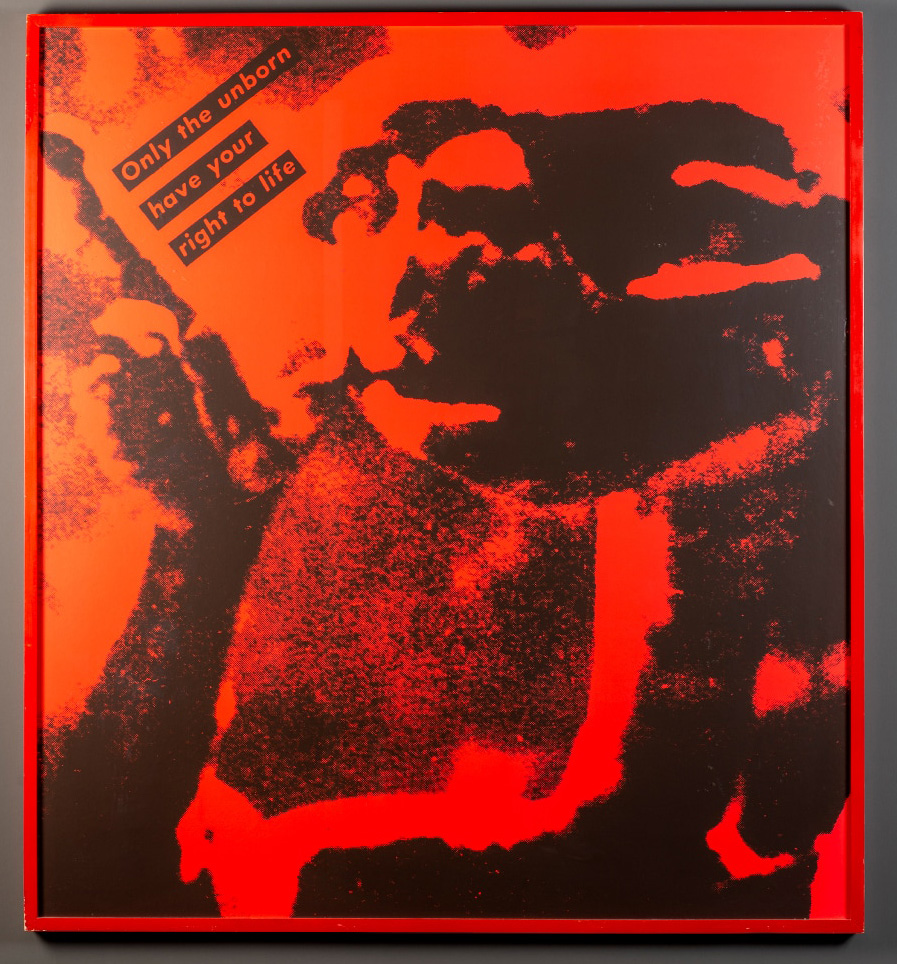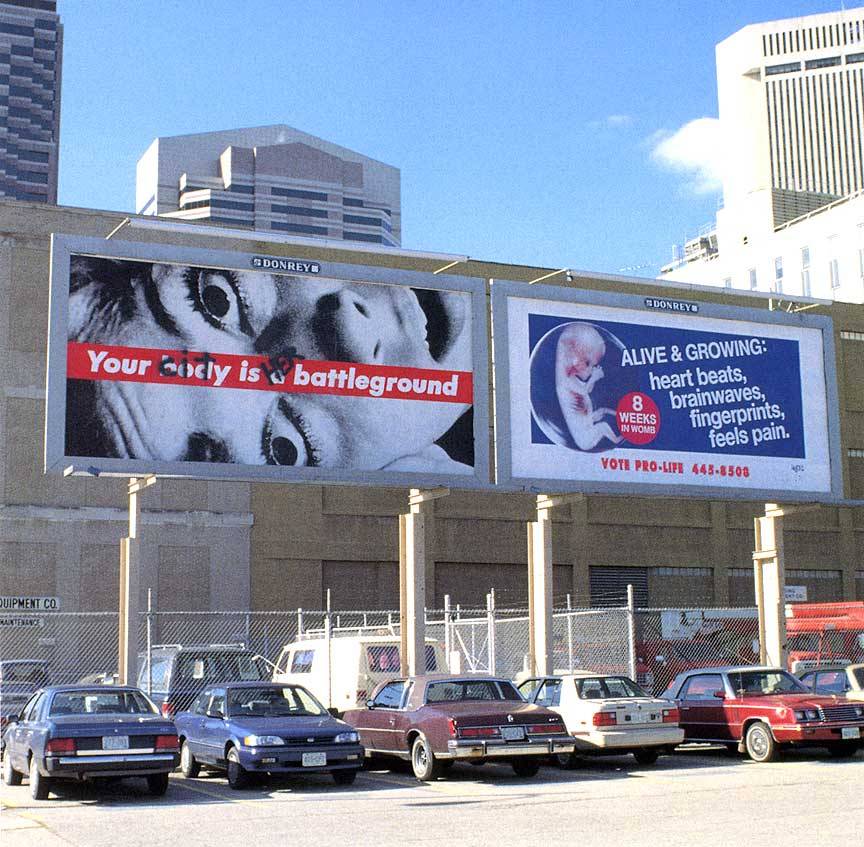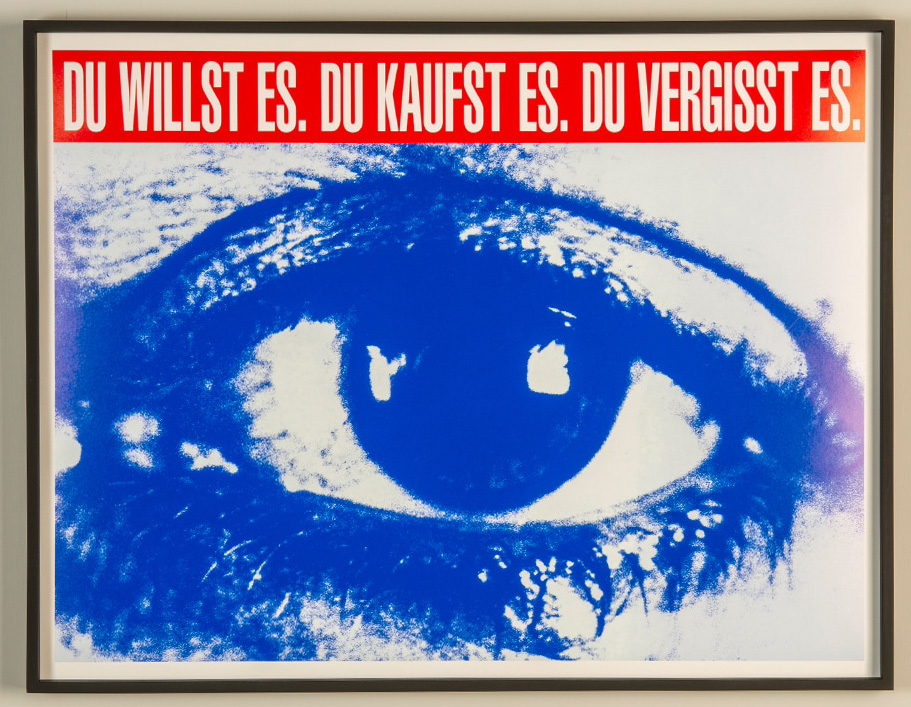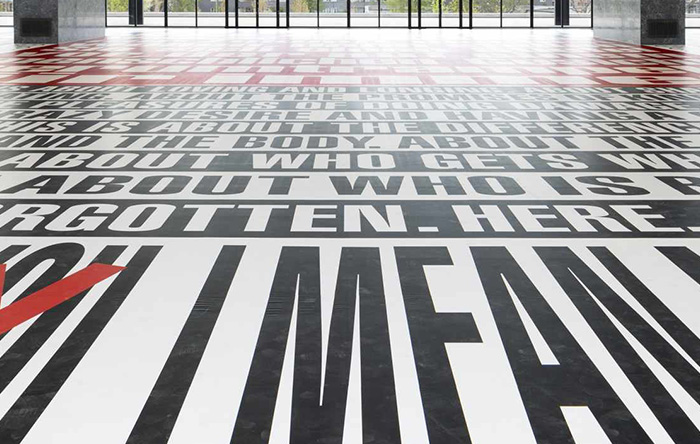22 July 2022
A closer look at the life and works of the artist Barbara Kruger, who is represented with two striking works in the exhibition And Now The Good News, a selection of works from the Nobel Collection.
““We live in a time of accelerated events, magnified by the power of digital media.” ;
Barbara Kruger
Since the 1970s, Barbara Kruger has been producing bold social commentary delivered through the juxtaposition of text and image. Born in 1945 in New Jersey, U.S., the artist dropped out of college due to economic problems, and began her career as a graphic designer at a media company. Her early works, collages of photographs overlaid with captions, reflect the techniques she learned as a graphic designer.
Kruger’s style is characterized as Futura Bold typeface over red background collaged on found images. Directness is an essential part of her work as she tackles the problems of modern society and delivers social commentary on power, capitalism, identity, and gender through concise statements and aphorisms. About the relationship between text and the images, Kruger says, “Obviously there are certain meanings suggested by these texts. But each viewer brings their own subjectivities to the reading,” noting that her choice of statements are always open to the audience’s interpretation.

The Nobel Collection features two notable works by Barbara Kruger. The first, her 1986 work Untitled (Only the unborn have your right to life) uses an image of E.T., the titular, fetus-like space alien from Steven Spielberg’s 1982 film. Kruger’s criticism of anti-abortion movements comes in the form of the statement “Only the unborn have your right to life” displayed on the top left-hand corner of the image. In 1990, the artist placed a billboard containing a similar slogan, “Your body is a battleground”, directly next to another from a pro-life organization.

Kruger’s works are a blend of activism and art. She advocates women’s fight against patriarchy for their right of choice, offering an artistic critique of the seizure of power over the body. This particular work of the artist regrettably remains relevant even today. In June 2022, the U.S. Supreme Court officially overturned the landmark Roe v. Wade ruling, which had granted a constitutional right to abortion in 1973. As a result, conservative states now have the ability to restrict and even outright ban abortions. Perhaps this decision, a clear sign of regression, hints that we are going through darker and more uncertain times than when Kruger produced this famous, and now unarguably timeless, piece.

Kruger’s early works feature several key messages that can be examined within the scope of the second-wave feminism of the 1970s. For instance, one of her most famous works, Untitled (Your Gaze Hits the Side of My Face) (1981) displays the female body as the object of male gaze. Here, the artist refers to the “objectifying male gaze”, a term coined by Laura Mulvey, a key figure of feminist theory, in her 1975 article. In this work, Kruger confronts the modernist take on the female body—a passive, inert object to be looked at—and reinterprets it with a postmodern, feminist perspective, arranging the words of her statement in a vertical stack next to the portrait bust of a woman.

The other work of Kruger featured in the And Now The Good News exhibition is a critique of capitalism from 2013: You want it. You buy it. You forget it. The artist first used this slogan as a full-page ad in the November 24, 2012 issue of The New York Times. The slogan, aimed directly at consumers, was as deliberate as it was timely, considering that the ad was published on the Black Friday, the busiest shopping day of the year with many stores offering highly discounted prices. Here, the reader takes on a dual role: the consumer who fuels capitalism by shopping, and the audience who takes the artist’s side by agreeing with the message. The smart placement of her slogan enables the work to convey the message effectively, whereas the striking image of an eye calls the viewer to question their habits, reminding them that there is always someone watching.

Barbara Kruger continues to produce art today. She had solo exhibitions in several leading art institutions around the globe, such as LACMA, Moderna Museet in Stockholm, Institute of Contemporary Arts in London, Musée d'art contemporain in Montréal and Neue Nationalgalerie in Berlin. Her collages are presented in the form of site-specific installations, which are augmented with multi-channel video installations to create immersive worlds. Kruger represented the US in the 1982 Venice Biennial, and she is also the recipient of the Venice Biennale’s Golden Lion for lifetime achievement.
Written by: Ulya Soley

Although traditionally used as a medium for functional or decorative objects, ceramic has become a medium that is increasingly used by contemporary. Here is the work of some important contemporary ceramic artists from around the world!

Martín Zapater y Clavería, born in Zaragoza on November 12th 1747, came from a family of modest merchants and was taken in to live with a well-to-do aunt, Juana Faguás, and her daughter, Joaquina de Alduy. He studied with Goya in the Escuelas Pías school in Zaragoza from 1752 to 1757 and a friendship arose between them which was to last until the death of Zapater in 1803.
Tuesday - Saturday 10:00 - 19:00
Friday 10:00 - 22:00
Sunday 12:00 - 18:00
The museum is closed on Mondays.
On Wednesdays, the students can
visit the museum free of admission.
Full ticket: 300 TL
Discounted: 150 TL
Groups: 200 TL (minimum 10 people)